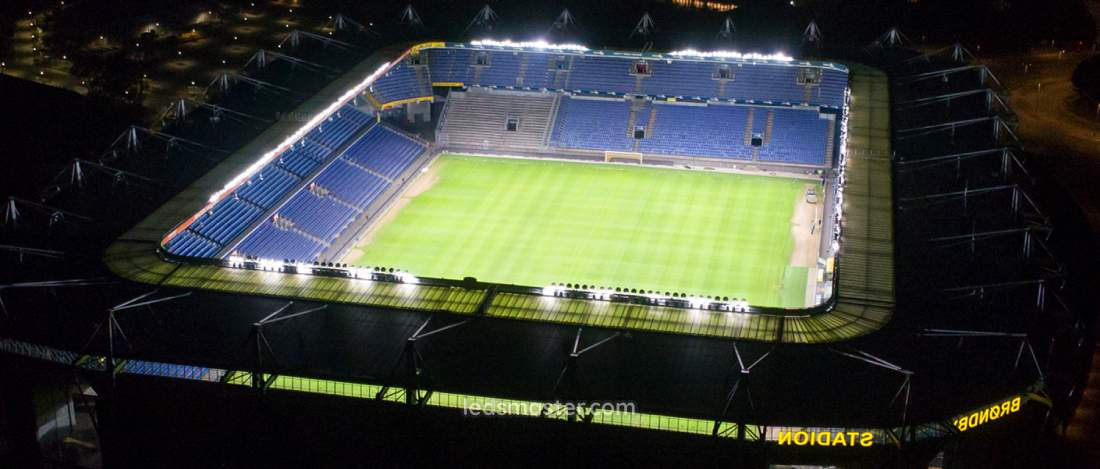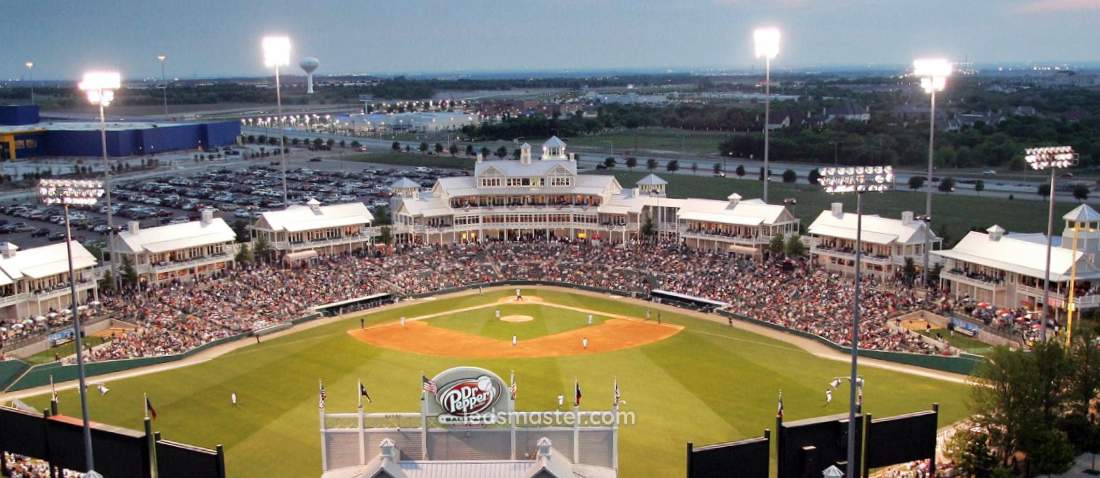Imagine you’re at a thrilling evening football match, the crowd is roaring, and the excitement is palpable. Suddenly, the stadium lights begin to flash intermittently, disrupting the perfect ambiance. Why does this happen? How does it affect the players on the field and the spectators in the stands? In this article, we’ll delve into the reasons behind stadium lighting flashing, its impact, and how to prevent it, ensuring every game is illuminated flawlessly.
Table of Contents
ToggleReasons for Stadium Lighting Flashing
Electrical Issues
One of the most prevalent causes of stadium lighting flashing is electrical problems. These issues can manifest in various forms, from power surges and fluctuations in voltage to faulty wiring and loose connections. Power surges can occur when there is a sudden increase in the electrical current, often due to lightning strikes, power outages, or equipment switching on and off. These surges can cause lights to flicker or flash intermittently, disrupting the consistent illumination required for a stadium setting. Fluctuations in voltage, on the other hand, can occur due to an unstable power supply or overloaded circuits, leading to similar flickering issues.
Faulty wiring is another significant contributor to electrical disturbances. Over time, wires can become damaged or worn out, leading to poor connections that can cause lights to flash. Loose connections within the lighting fixtures or the electrical circuit can also result in intermittent flashing. Regular maintenance and inspection of the electrical systems are crucial in preventing these issues. Ensuring that all wiring is secure, connections are tight, and the overall electrical infrastructure is in good condition can help maintain stable lighting.

Incompatible Components
The use of incompatible components within the lighting system is another common reason for stadium lights to flash. For instance, mismatched ballasts and bulbs can create inconsistencies in the power supply, resulting in flickering lights. Ballasts are essential components that regulate the current to the bulbs, ensuring they operate correctly. If the ballasts are not compatible with the bulbs, they may not be able to provide a stable current, leading to flashing or flickering.
Using bulbs that are not designed for the specific fixtures or ballasts can lead to similar issues. Ensuring that all components of the lighting system are compatible and designed to work together is essential for stable performance. This includes using bulbs, ballasts, and fixtures that are specified by the manufacturer and are intended to function as a cohesive unit. By adhering to these compatibility guidelines, the likelihood of encountering flashing lights can be significantly reduced.
Aging Equipment
Stadium lighting systems, like all technology, have a finite lifespan. Over time, components such as bulbs, ballasts, and fixtures can degrade, leading to reduced performance and flashing. Aging bulbs may lose their ability to maintain consistent brightness, resulting in flickering or intermittent lighting. Ballasts, which are responsible for regulating the current to the bulbs, can also wear out over time, leading to instability in the power supply and flashing lights.
Fixtures themselves can suffer from wear and tear, particularly in outdoor stadiums where they are exposed to harsh weather conditions. Corrosion, moisture ingress, and physical damage can all contribute to the degradation of the lighting system. Regular replacement of aging equipment and upgrades to newer, more efficient technologies can help maintain consistent lighting. By proactively replacing old components before they fail, stadiums can avoid the disruptions caused by flashing lights and ensure a reliable lighting system.

Effects on Football Players and Spectators
Impact on Players
Flashing lights can have a significant impact on football players’ performance. Consistent lighting is essential for athletes to accurately judge distances, track the ball, and maintain focus during the game. Flashing lights can create visual disturbances that impair players’ ability to see the ball clearly, leading to missed passes, poor judgment, and even injuries. The constant changes in lighting intensity can also cause eye strain and fatigue, affecting players’ overall performance and concentration.
Moreover, the psychological impact of flashing lights cannot be overlooked. Players may become distracted or frustrated by the intermittent lighting, which can further impair their focus and performance. In high-stakes games where every moment counts, even minor disruptions can have significant consequences. Ensuring stable and consistent lighting is therefore critical for maintaining optimal playing conditions and allowing athletes to perform at their best.
Impact on Spectators
For spectators, the experience of watching a live football match can be greatly diminished by flashing lights. It can be distracting and uncomfortable, making it difficult to follow the game’s action. Spectators might find their eyes drawn to the flashing lights instead of the field, leading to a less enjoyable viewing experience. Prolonged exposure to flashing lights can also cause eye strain and headaches, further detracting from the enjoyment of the game.
In some cases, flashing lights can pose serious health risks to spectators with photosensitive epilepsy. The intermittent lighting can trigger seizures in susceptible individuals, creating a dangerous situation in the stadium. To ensure the safety and comfort of all spectators, it is essential to address the issue of flashing lights and provide a stable and consistent lighting environment.
Environmental Factors
Weather Conditions
Weather conditions can significantly contribute to stadium lighting flashing. High winds, rain, and extreme temperatures can all affect the performance of lighting systems. For example, moisture from rain can seep into electrical connections, causing short circuits and flickering lights. High winds can cause fixtures to move slightly, disrupting the electrical flow and resulting in flashing lights. Extreme temperatures can also affect the performance of lighting components, leading to instability and flickering.
Ensuring that lighting systems are weather-resistant and securely installed can help mitigate these issues. Using weatherproof fixtures and sealing electrical connections can prevent moisture ingress and short circuits. Additionally, securing fixtures firmly to prevent movement in high winds can help maintain stable lighting. By taking these precautions, stadiums can reduce the impact of environmental factors on their lighting systems and ensure consistent illumination.
Power Supply Stability
The stability of the power supply to the stadium is another critical factor in preventing flashing lights. In regions where the power grid is unreliable or prone to fluctuations, stadium lights may flash due to inconsistent power delivery. Installing uninterruptible power supplies (UPS) and voltage regulators can help stabilize the power supply and prevent flashing. These devices can compensate for fluctuations in voltage and provide a consistent current to the lighting system, ensuring stable performance.
Using generators or backup power sources can help maintain stable lighting during power outages or grid disruptions. By ensuring a reliable and stable power supply, stadiums can minimize the risk of flashing lights and provide consistent illumination for events.
Technological Solutions
LED Lighting Systems

Upgrading to LED lighting systems can significantly reduce the likelihood of flashing. LED lights are known for their stability, energy efficiency, and long lifespan. Unlike traditional lighting systems, LEDs are less prone to flickering and can provide consistent illumination even in challenging conditions. LEDs operate using a direct current (DC) power supply, which is inherently more stable than the alternating current (AC) used in traditional lighting systems. This stability reduces the likelihood of flashing due to power fluctuations.
Moreover, LED systems often come with advanced controls that allow for precise adjustments and monitoring. These controls can detect and compensate for any disturbances in the power supply, further reducing the risk of flashing. Additionally, LED lights have a longer lifespan and require less frequent replacement, reducing the risk of flashing due to aging equipment. By upgrading to LED lighting systems, stadiums can ensure stable and consistent illumination for their events.
Smart Lighting Controls
Implementing smart lighting controls can also help prevent stadium lighting flashing. These systems use sensors and automated controls to monitor and adjust lighting in real-time, compensating for any fluctuations in the power supply or other disturbances. Smart lighting systems can detect when lights are flashing and automatically adjust the current or switch to a backup power source to maintain stable illumination.
Smart lighting controls can optimize the performance of the lighting system by adjusting the intensity and color temperature of the lights based on the specific needs of the event. This can enhance the viewing experience for spectators and improve the performance of players. By using smart lighting controls, stadiums can ensure that their lighting systems provide optimal illumination and minimize the risk of flashing.
Maintenance and Inspection
Regular Inspections
Regular inspections of the stadium lighting system are crucial for identifying and addressing potential issues before they lead to flashing. This includes checking electrical connections, testing the performance of lights and ballasts, and ensuring that all components are in good working condition. Scheduled maintenance can prevent minor issues from escalating into major problems. By conducting regular inspections, stadiums can detect and address potential issues before they cause disruptions.
Regular inspections can help identify aging equipment that may need to be replaced. By proactively replacing worn-out components, stadiums can maintain the performance and stability of their lighting systems. Regular inspections are an essential part of maintaining a reliable and consistent lighting environment for events.
Component Replacement
Timely replacement of worn-out or faulty components is essential for maintaining a stable lighting system. This includes bulbs, ballasts, wiring, and other electrical components. Using high-quality, compatible parts can enhance the reliability of the lighting system and reduce the risk of flashing. By replacing aging or faulty components before they fail, stadiums can prevent disruptions and ensure consistent illumination.
Upgrading to newer, more efficient technologies can also help maintain stable lighting. For example, replacing traditional lighting systems with LED lights can reduce the risk of flashing and improve the overall performance of the lighting system. By investing in high-quality components and technologies, stadiums can ensure that their lighting systems provide optimal illumination for their events.
Conclusion
Stadium lighting flashing is a multifaceted issue that can arise from electrical problems, incompatible components, aging equipment, and environmental factors. It affects both football players and spectators by creating visual disturbances and discomfort. However, by upgrading to modern LED lighting systems, implementing smart lighting controls, and ensuring regular maintenance and inspections, the issue of flashing lights can be significantly mitigated. Consistent and stable lighting is essential for the optimal performance of athletes and the enjoyment of spectators, making it a priority for stadium management.

